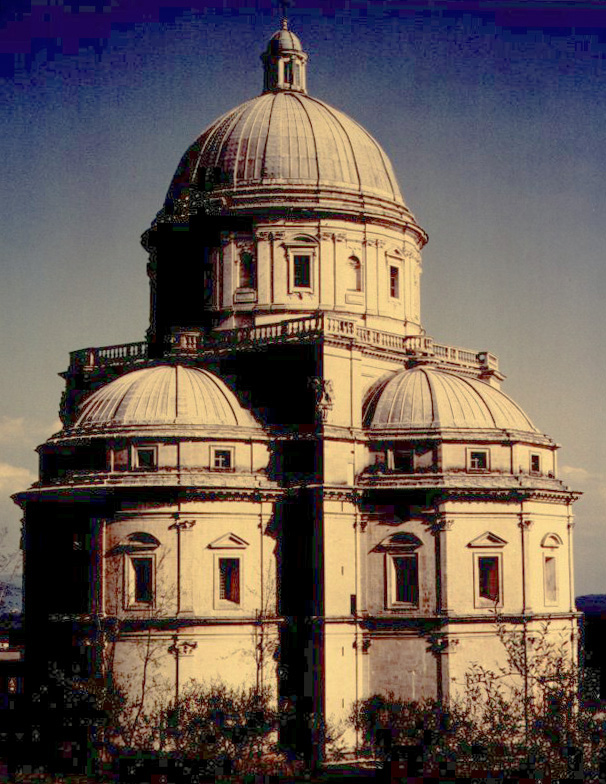A New Architectural Eye
Today, Leonardo da Vinci invents a new way of seeing. The University of Houston's College of Engineering presents this series about the machines that make our civilization run, and the people whose ingenuity created them.
I was in our Architecture Librarian's office the other day. On her wall I noticed a photo she'd taken. It was a Renaissance Italian church. I told her I liked it.
She'd seen something more than cold stone in that building. Next day she sent over some material about the church. Along with it, she sent some architectural sketches by Leonardo da Vinci.
The church is laid out in the form of a Greek cross. It's small -- alone on a hillside and done in classic perfection. It's called St. Mary of Consolation.
Leonardo's sketches show several churches. One's just like this one. He drew them before our modern drafting conventions had been created. Up to then, we'd seen only floor plans and side views of the great buildings.
Leonardo takes us into the air and lets us look downward in a three-quarter view. We see these buildings of his imagination whole -- so like that photo, but from a different angle.
Those sketches might not seem wonderful at first. But see what came before Leonardo. Look at the 13th-century sketchbook of the Medieval architect Villard de Honnecourt. Villard struggled vainly to show us the curved apse of Rheims Cathedral and its flying buttresses. He simply didn't have the artistic tools he needed to draw a gabled tower.
When Leonardo took on those problems, he began by inventing one-point perspective. And to do that, he first studied the external world with a camera obscura -- a camera without film. A camera obscura projects the picture where film would be in a modern camera. But you have to trace the picture by hand.
He also took up the study of formal geometry. He created an architecture of regular polygons -- formal and balanced. His floor plans are complex overlapping squares and octagons. They merge into that Greek cross with its four equal arms.
Historians can't trace this church to Leonardo. It was built after his death. Yet it certainly derived from his sketch. The design was too original. It was too different from gothic cathedrals to be coincidence.
Leonardo was so many things that he drives historians crazy. Only one piece of binding tissue holds him together. And that's vision. Leonardo was a new way of seeing the world.
This little church has such absolute grace and balance. It has freshness that will touch the 25th century as surely as it touches us. For it is a new architecture that flowed from a wholly new way of showing what the designer wanted us to see.
I'm John Lienhard, at the University of Houston, where we're interested in the way inventive minds work.
(Theme music)
Murray, P., Architecture of the Renaissance. New York: N.H. Abrams, 1971.
Bowie, T. (editor) The Sketchbook of Villard de Honnecourt. Westport, CT., Greenwood Press Pubs., 1959.
Pedoe, D., Geometry and the Visual Arts. New York: Dover Publications, 1978, Chapters 3 and 4.
The UH Architecture Librarian in the episode is Margaret Culbertson. I am most grateful for the idea and for her help.

St. Mary's of Consolation, octagonal church. Image courtesy of Margaret Culbertson